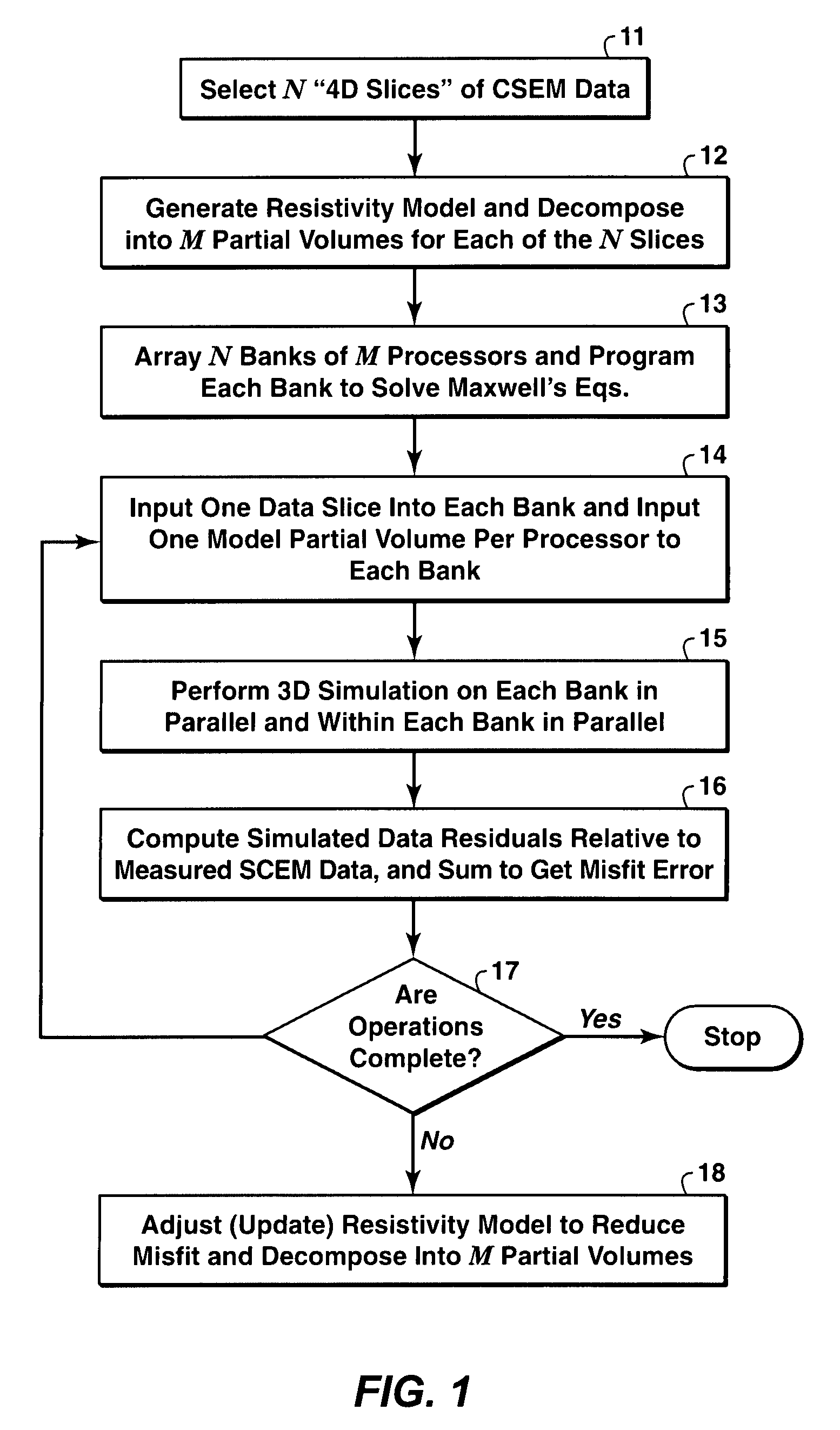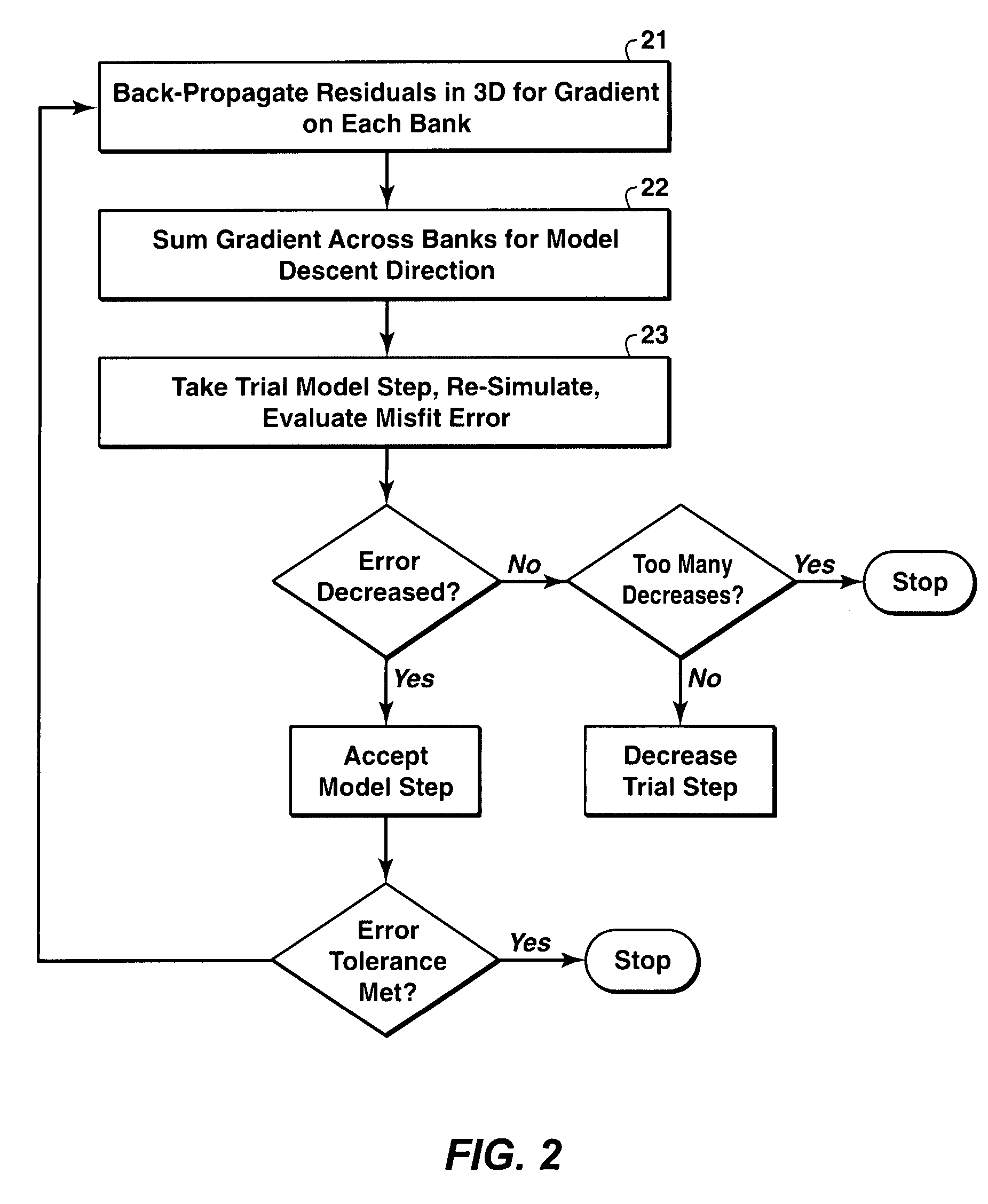Electromagnetic imaging by four dimensional parallel computing
a technology of parallel computing and electromagnetic imaging, applied in the field of electromagnetic imaging by four dimensional parallel computing, can solve the problems of insufficient 3d csem datasets, high cost of deepwater exploration wells, and significant non-uniqueness and interpretation needs, so as to reduce the difference
- Summary
- Abstract
- Description
- Claims
- Application Information
AI Technical Summary
Benefits of technology
Problems solved by technology
Method used
Image
Examples
Embodiment Construction
[0026]Parallel implementations of iterative solvers achieve satisfactory results for the solution of Maxwell's equations when used on systems running up to a few hundred CPU's in parallel on the best available communications networks. Less advanced communications networks will display inefficiencies as the number of parallel processing units grow past approximately 32. Unfortunately, the application of MCSEM methods to large unexplored areas can easily lead to situations where many thousands of simulations of Maxwell's equations must be confronted. A feature of the present invention is to solve this problem in parallel, with each parallel solution itself involving its own separate group of processing units working together in parallel on the assigned solution task. This approach allows the effective application of an almost unlimited number of processing units because the communications required between the separate solutions of Maxwell's equations is extremely sparse in the sense t...
PUM
 Login to View More
Login to View More Abstract
Description
Claims
Application Information
 Login to View More
Login to View More - R&D
- Intellectual Property
- Life Sciences
- Materials
- Tech Scout
- Unparalleled Data Quality
- Higher Quality Content
- 60% Fewer Hallucinations
Browse by: Latest US Patents, China's latest patents, Technical Efficacy Thesaurus, Application Domain, Technology Topic, Popular Technical Reports.
© 2025 PatSnap. All rights reserved.Legal|Privacy policy|Modern Slavery Act Transparency Statement|Sitemap|About US| Contact US: help@patsnap.com



